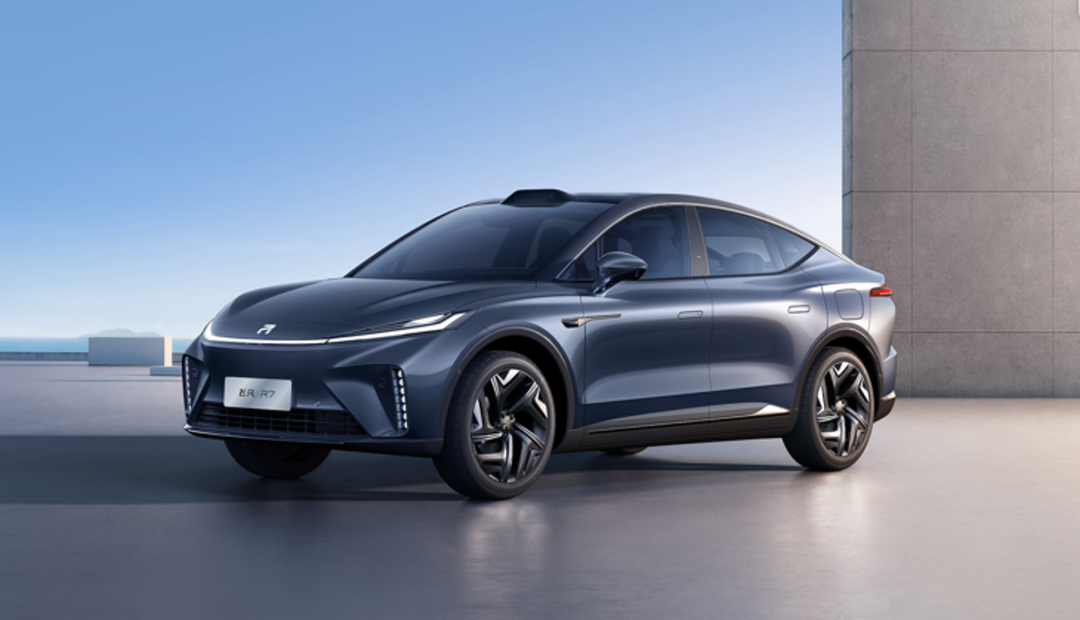Author: Tuantuan
Details are behind the full-configuration operations
In the past year, in addition to reporting on new car releases, we have also had a new task of getting to know new brands incubated by various car companies. For example, SAIC Group’s Fevan Motors, Geely’s Zeekr, Dongfeng’s Voyah, etc. These new brands all had the same purpose when they were born: to shoulder the mission of brand promotion.
Looking back at the past, China’s domestic brand automakers have been developing at full speed for more than 20 years, but to this day, we still have a small goal that has not been achieved, that is, the high-end field is still dominated by non-domestic brands despite many attempts. At least in the era of intelligent automobiles, we can see an opportunity to use technology to pave a new road, but how to use technology to interpret luxury? I think this is still a problem that many product managers are thinking hard about.
The epidemic at the beginning of 2022 slowed down the pace of the entire automobile industry. It was not until the Hong Kong-Zhuhai-Macao Auto Show that we were able to have face-to-face contact with the vehicles released in the first half of the year. Of course, this auto show, we also hope to find a way to use technology to interpret luxury in some products. I believe that technology is a label that all self-owned brand products will use, but there are not many that can be called luxury. Perhaps only Fevan R7 at this auto show is new and flashy enough, and meets our expectations.
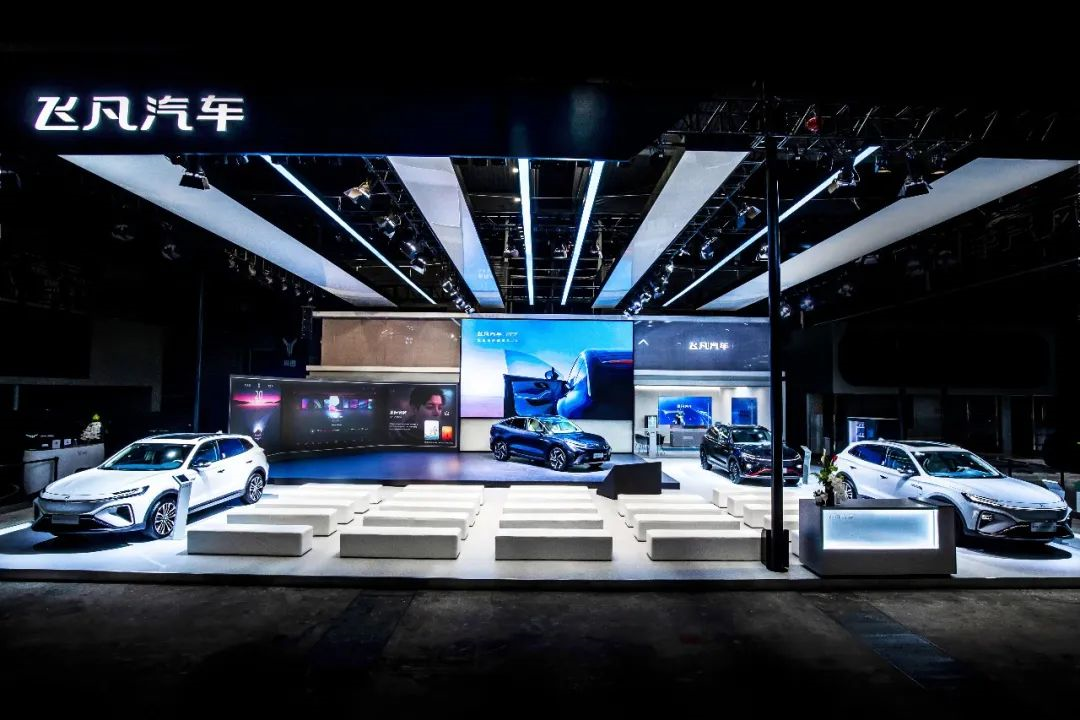
The expected price range of Fevan R7 is generally between 300,000 and 400,000 yuan. From the price point of view, Fevan R7 has already reached the market of mid and large-sized luxury SUVs. The length, width and height data are 4900mm * 1925mm * 1655mm, with a wheelbase of 2950mm. Looking at the dimensional data alone, Fevan R7 is almost superior to the same-level models of BBA, it is one circle larger than Model Y, and slightly larger than ES6 and EC6.
I believe that self-owned brands are well aware that leapfrogging in size is only an accumulation of quantitative changes regarding luxury positioning. The qualitative change still requires deep cultivation from inside to outside of the product. There is no doubt that this also applies to R7.
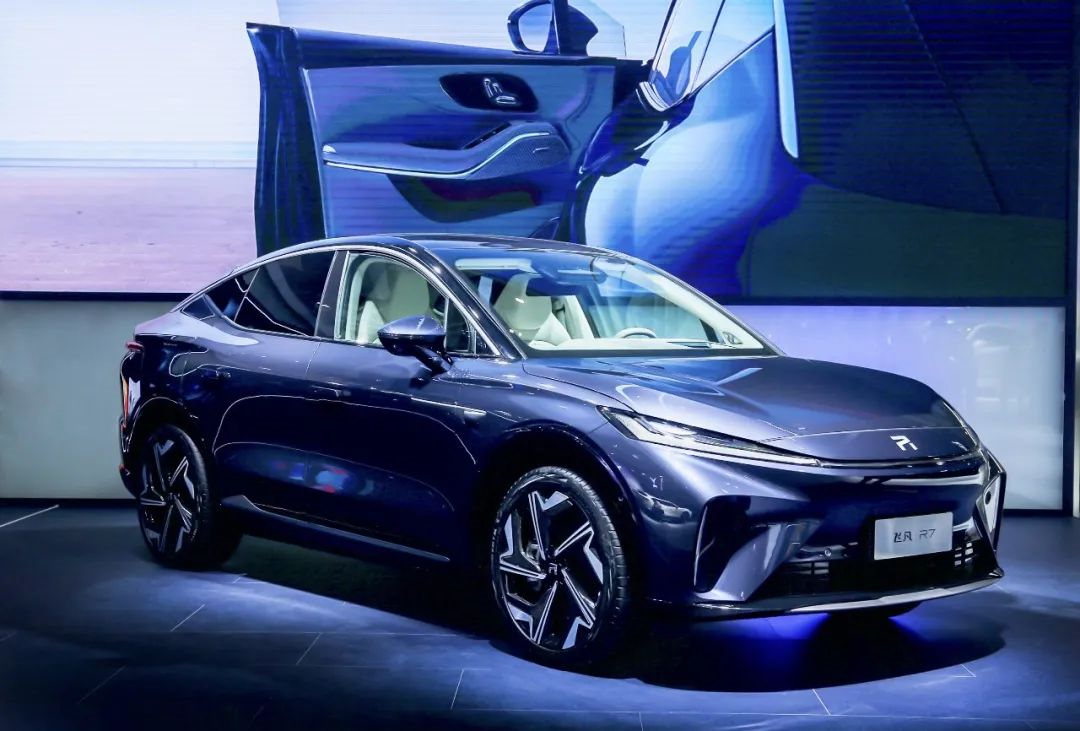
Design is not just an “aesthetic game”
In March of this year, Fevan Motors and SAIC Innovation and R&D Institute jointly established a design co-creation center. Fevan R7 chief designer Martin Kropp is one of its core members. He graduated from the “cradle of the world’s top car designers,” the Royal College of Art in the UK. If we examine the starting point of major luxury and even ultra-luxury brand designers, most of them point to this place.This determined that the RisingAuto R7, written by Martin Kropp, outlined itself towards luxury from the very beginning. Its appearance adopts the popular Coupe-style SUV design of recent years, while the details incorporate both “technological sense” and “design sense” in a good fusion, which is also the design concept that RisingAuto insists on, “simplicity is extraordinary”.

Clearly, technology and design are complementary, which also fits Martin Kropp’s design motto “technology interprets styling and design serves technology”. Under this motto, the RisingAuto R7 has a super low drag coefficient of 0.238Cd, which is very exaggerated for an SUV.
The drag coefficient of a typical electric SUV is around 0.28Cd, such as the Audi e-tron and the Mercedes-Benz EQC. Martin Kropp used master-level lines to outline an 18% aerodynamic optimization compared to luxury brands with similarly outstanding design skills.
Why is drag coefficient so important? The most direct reason is that the drag coefficient will affect the vehicle’s endurance capability at high speeds. We all know that high speeds are the situations where electric vehicles consume the most energy. And under the same conditions, for every 0.01 reduction in drag coefficient, the pure electric vehicle’s cruising range can be extended by around 5-8 km.
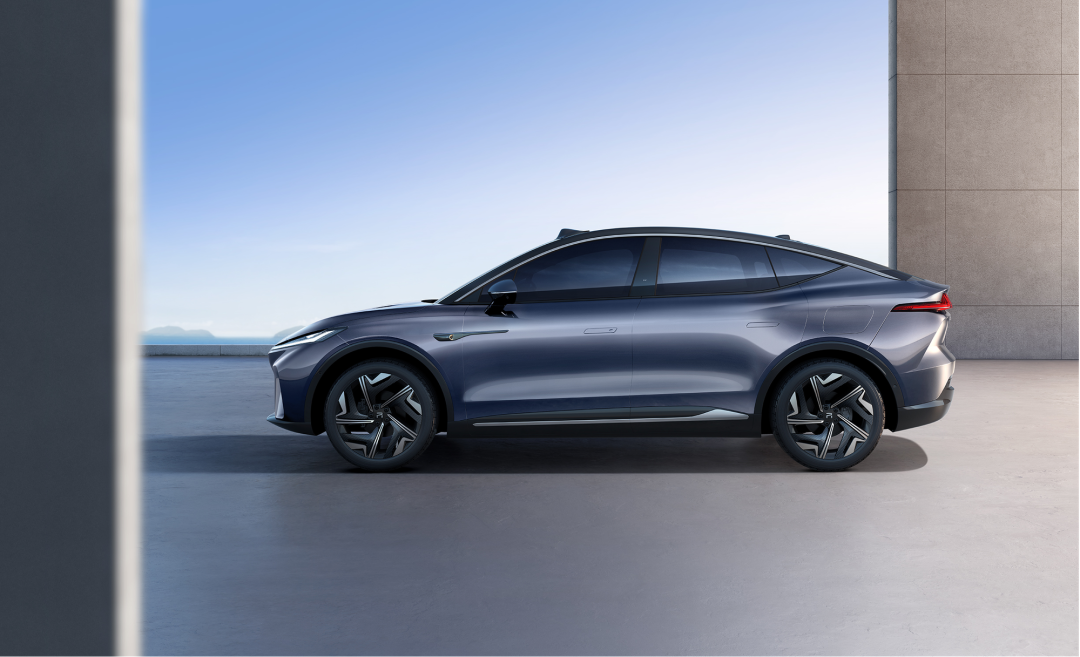
Moreover, compared to traditional luxury car manufacturers’ purely electric SUV products, the RisingAuto R7 will have a harder time reducing drag coefficient due to the large number of high-precision sensors it is equipped with (such as the prominent top-mounted lidar and surround-view cameras located below the rearview mirrors and on the fenders). To control the drag coefficient of an SUV to near that of a sedan, we can see the skill of the designer from this aspect.
If low drag is the intangible integration of technology and design, then the flying wing-shaped DRL daytime running lights and the swept-wing-shaped LED taillights running through the RisingAuto R7, are excellent technological embellishments on the design level, while also enhancing the overall appearance. Paired with seven vertical laser lights arranged on the front face, it further enhances the technological and luxurious appeal of the RisingAuto R7.
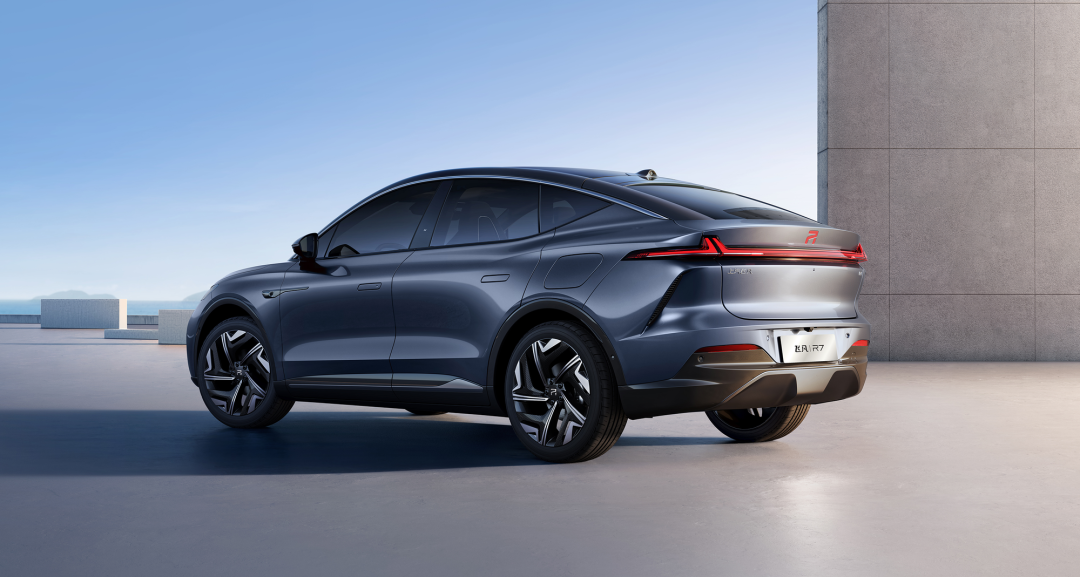
Thoughts on “Unicorns”Speaking of appearance, the most iconic component of the latest intelligent cars is the “horns on their heads” – LiDAR. This is no longer a novelty in intelligent cars, but the controversy surrounding the number of LiDARs has always been ongoing.
A standard solution for LiDARs is 1-2, but some radical car companies have chosen to use 4 LiDARs for 360-degree full coverage. The Feiteng R7, on the other hand, uses a “Unicorn” paired with a “Unicorn” for an extremely intelligent combination.
A “watchtower” style LiDAR is located on the top of the car, and the LiDAR supplier is the “Unicorn” company Luminar within the industry. Luminar can be said to be the leader in the LiDAR industry, the creator of the 1550nm car-grated LiDAR technology, and its founder, Austin, is a legend in the industry.
A small side story: Austin studied at the Beckman Laser Institute of the University of California, Irvine when he was young. After receiving a $100,000 scholarship from Stanford at the age of 17, he started his own business. At the age of 22, Luminar, which he founded, received a $36 million investment, and its market value soared to $1 billion. Therefore, he is also known as the “Little Musk”, a pure “other people’s child”.
Going back to the sensor solution for the Feiteng R7, in addition to one LiDAR, it also comes with:
-
2 Premium 4D imaging radars in the front and back;
-
4 enhanced long-range point cloud corner radars;
-
12 high-definition cameras with a maximum of 8 million pixels;
-
12 ultrasonic radars;
-
1 driver detection system DMS;
-
1 high-precision positioning system.
Among all the sensor configurations, the Premium 4D imaging radar and the enhanced long-range point cloud corner radar are the two hardware components that can output point clouds.
The Premium 4D imaging radar is provided by Continental. 4D refers to distance, speed, horizontal azimuth, and vertical height. Compared with traditional millimeter-wave radar, 4D radar can provide point cloud functionality by adding the number of transmitting and receiving channels. Thus, it can output X, Y, H, V (distance, horizontal and vertical positioning height, and speed) four indicators, that is, adding the fourth indicator of “detecting object height” on the basis of 3D, thereby avoiding missing static obstacles and allowing classification, minimizing emergency brakes and false brakes.Compared with the normal millimeter wave radar with a detection distance of 210m, the Valeo 4D imaging radar has a detection distance of up to 350m and high detection accuracy, greatly enhancing safety.
Compared with the normal angle radar with a detection distance of 110m, the enhanced long-range angle radar can detect up to 190m and has working modes for near, short, and mid-range targets. While outputting target objects, it also has the ability to output raw point cloud data, accurately identifying small target objects such as road dividers and road markers, as well as vehicles at medium to long distances on highways, helping to identify high-speed oncoming vehicles on both sides of the road earlier, and helping to deal with congestion and lane-changing scenarios.
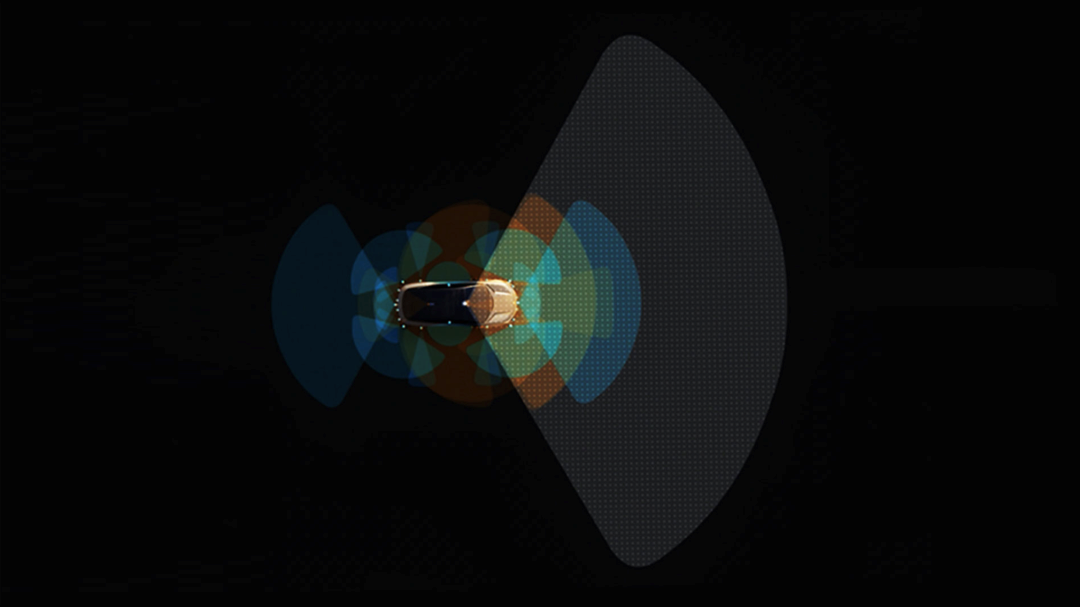
The characteristic of the sensing solution for the Fengvan R7 is a clear approach, for instance, the laser radar does not blindly pursue the largest number of objects, and different sensors perform their respective duties. The laser radar is oriented toward the front and collects information on the most complex surfaces and responds to sudden situations. The Premium 4D imaging radar is paired with the laser radar to complete high-precision sensing tasks. The 360-degree high-definition cameras and the enhanced long-range angle radar are used for monitoring the surrounding environment and implementing safe active lane-changing functions. The ultrasonic radar is used to deal with narrow situations.
Of course, in order to ensure that users can get the best experience, Fengvan Automobile has very high requirements for its suppliers. As mentioned earlier, Luminar and Valeo’s Premium 4D Imaging Radar are both top choices in the industry.
Besides displaying information, what else can the in-car system do?
In addition to automatic driver assistance hardware, the Trinity multi-dimensional sense interaction cabin is also a highlight of the Fengvan R7 product offering. As soon as you open the door, you can feel that you are about to enter a space embraced by luxurious technology.
The Fengvan R7 is an SUV that combines luxury and sportiness. The electric suction door is essential for luxury, while frameless doors are the best combination for sportiness. In addition, the electric opening and closing of doors can also give users a sense of ceremony. The Fengvan R7’s frameless, self-suction, and induction-type electric door opening function encompasses all three of these functions in one.
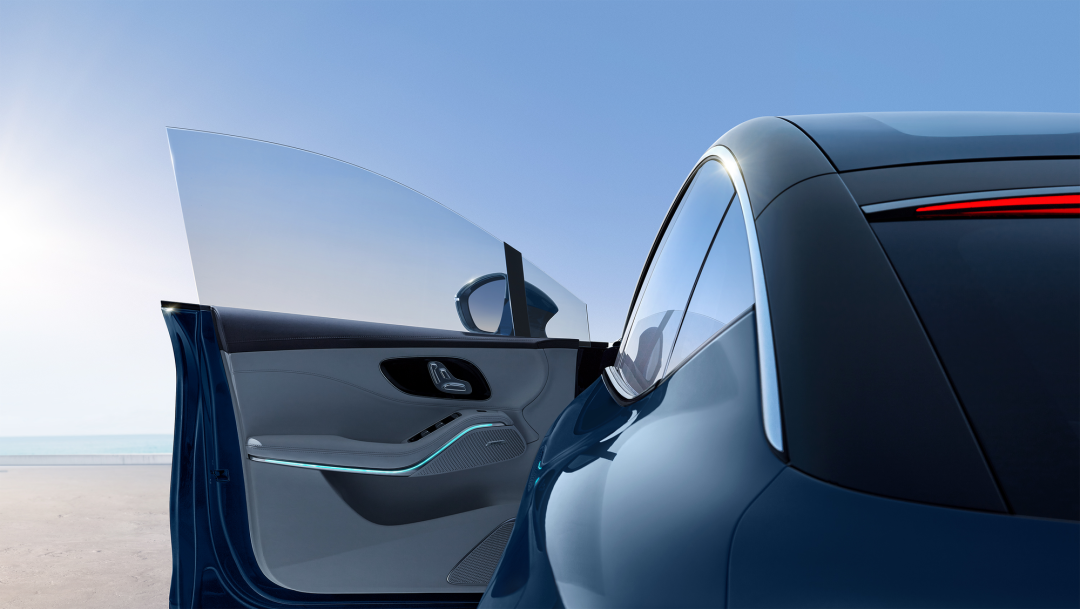
Good things that are integrated can bring together strengths, but they can also bring together weaknesses. For example, there are issues with sound insulation for frameless doors and safety issues with automatic sensing doors. To address this, Fengvan Automobile is not at all reluctant to spend money to adopt 6mm double-layer laminated and noise-reducing car door glass, combined with the entire vehicle’s NVH tuning, to achieve better noise reduction effects.The RisingAuto R7’s automatic self-priming induction door combines with door opening warning function, using angle radar detection to recognize two-wheeled vehicles, and judge the risk based on the speed and distance of the oncoming vehicle, allowing the electric door selection to stop. At the same time, if someone stands at the door or there is an obstacle at the door, the electric door will also stop.
After the ceremony, the first thing that catches the eye is a 43-inch wide true-color three-screen display similar to the Mercedes EQS. It is understood that this is the largest size of car-mounted three-screen display among Chinese brands. In terms of interactive hardware, the central control main screen is a 15.05-inch AMOLED ultra-clear screen. The size of the instrument panel screen and co-pilot screen are 10.25 inches and 12.3 inches respectively, and MiniLed material is used without sparing cost. The vehicle chip is currently the highest specification Qualcomm Snapdragon 8155 in the industry.
The central control screen, which has the highest frequency of use and carries more interactive functions, has a 2.5K high resolution, which is twice the 2.07 million pixels of the commonly recognized 1080p, reaching 4.09 million pixels with 2560*1600.
The higher the pixel, the finer the display on the same size screen. The current mainstream 55-inch HD TVs also use a resolution of 2K. The same pixels are condensed onto the 15.05-inch car screen, with even higher display delicacy.
In addition, the central control screen also has 100% NTSC ultra-high color gamut and colorful colors, and 1000000:1 ultra-high contrast for pure colors.
Compared with the experience of using cheap car screens, the ultra-clear large screen is like watching a gun version movie on a pirated website, and enjoying a blockbuster in a 3D IMAX theater. Of course, the gun version movie can also let you know the complete story, but it cannot obtain pleasure and shock. Perhaps the key to shaping luxury in smart cars lies in using more advanced technology to turn basic experience into a feast for the eyes and ears, and to enjoy the eyes while obtaining information.
In addition to the car-mounted screen, there are also 14 BOSE brand high-performance speakers on the RisingAuto R7, which works together with the screen to create a more immersive listening experience for all passengers by BOSE CenterPoint virtual surround sound technology, which can convert stereo music into multichannel mode.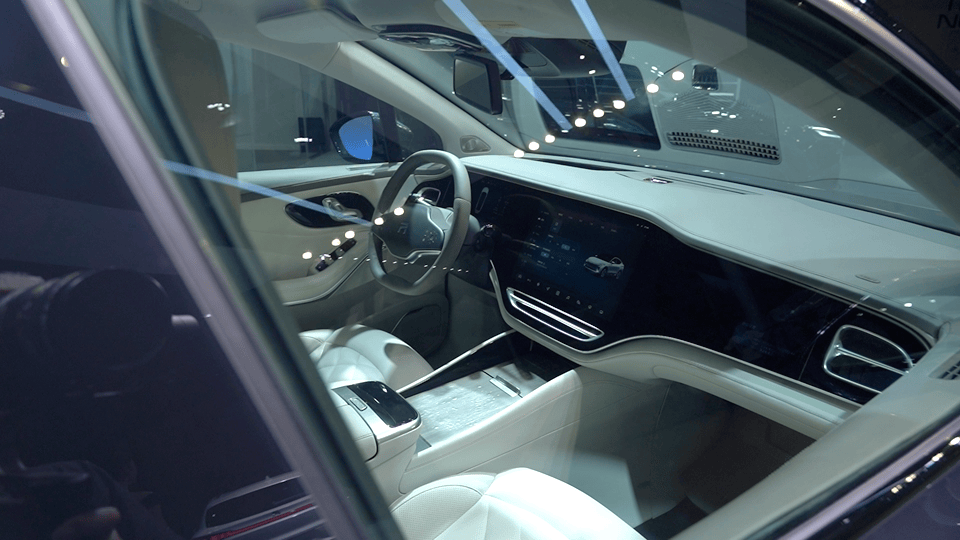
Is Your HUD Still Showing Text While Others Have Already Used Holographic Projection?
Not long ago, I received a car from a certain brand for a test drive. On the day of the test drive, we headed to the outskirts of the city facing the morning sun. There was nothing unusual on the road, except for the feeling that something was missing in front of my eyes. It wasn’t until we entered the mountain road where the sunlight was blocked by the mountains that I realized this car also had a HUD!
Undoubtedly, everyone has different views on the HUD configuration. The main reason for this is that the quality of HUD products on the market varies greatly, and the experience is even more different. It is hard to see during the day, blurry at night, and obstructs the line of sight. There are also those that pretend to be AR-HUD but are just running animations and scrolling text. These are all problems that exist in current HUD products.
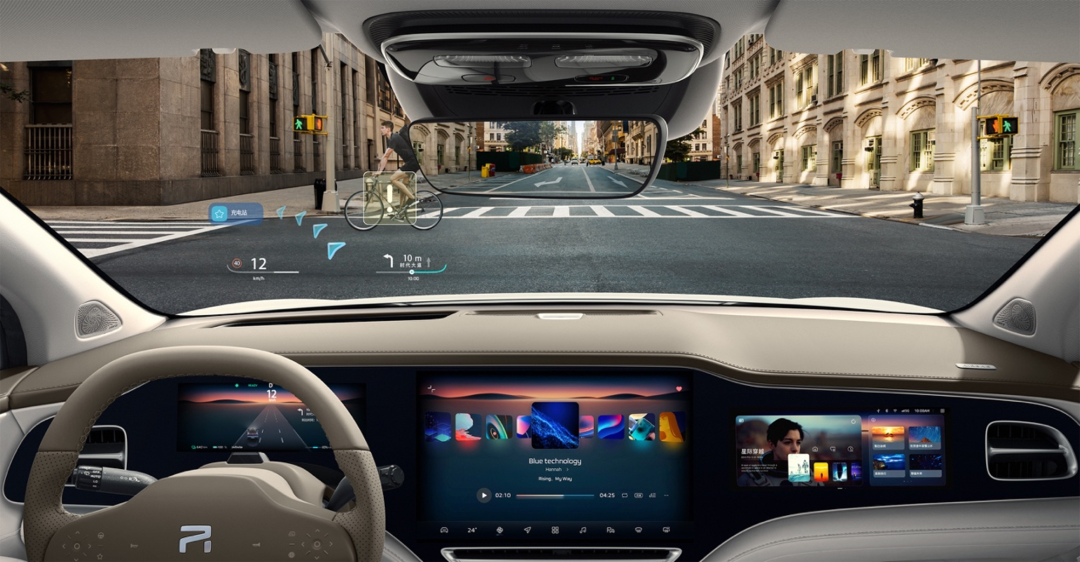
The RisingAuto R7 is the first car equipped with the world’s first Huawei Vision Enhancement AR-HUD system for mass production. It provides instrument information display, AR navigation, night vision/rain and fog enhancement and other intelligent driving assistance tips, as well as audio and video entertainment and other rich application scenarios. The 13°×5° global mass production car model has the largest field of view angle, the highest industry resolution of 1920×730, and can achieve a contrast ratio of 1200:1, ensuring that the picture is clear and smooth. During normal driving and navigation, it continuously guarantees an unobstructed driving view.
The purpose of AR is to integrate the information in front of the driver with the real world. The most intuitive experience is to achieve naked-eye 3D effects. The experience obtained through creating a 3D display screen in front of the driver’s line of sight, similar to holographic projection, is completely different from the effect achieved by enlarging and reducing 2D animations to create 3D effects.
The difficulty of AR-HUD lies in presenting the virtual world through 3D light field display technology, as well as real-time fusion of virtual and real worlds.
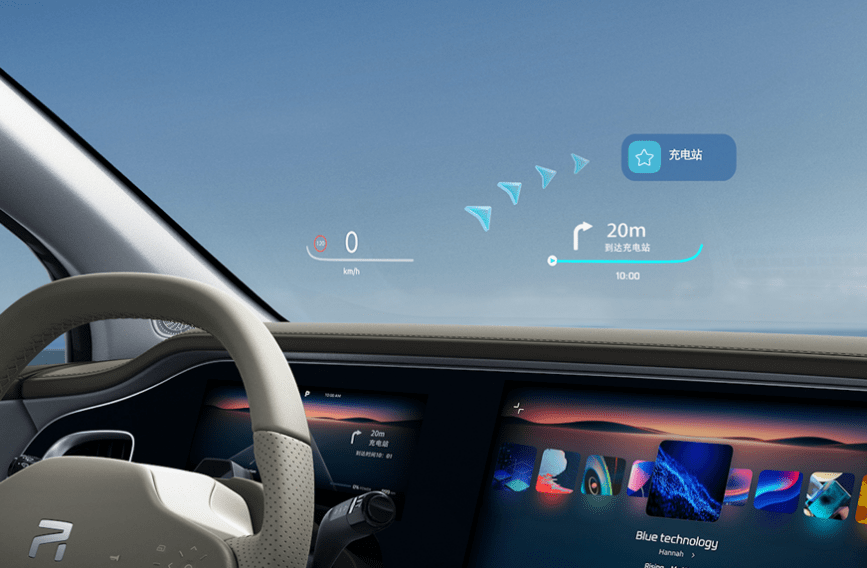
The core technology of the AR-HUD installed on the RisingAuto R7 comes from Huawei’s ODP optical engine, combined with IMU (Inertial Measurement Unit) and DMS (Driver Monitoring System), to dynamically stabilize the image in real-time, eliminate dizziness, coordinate the visual effects of the driver, car, and road while enhancing the visual 3D effects.
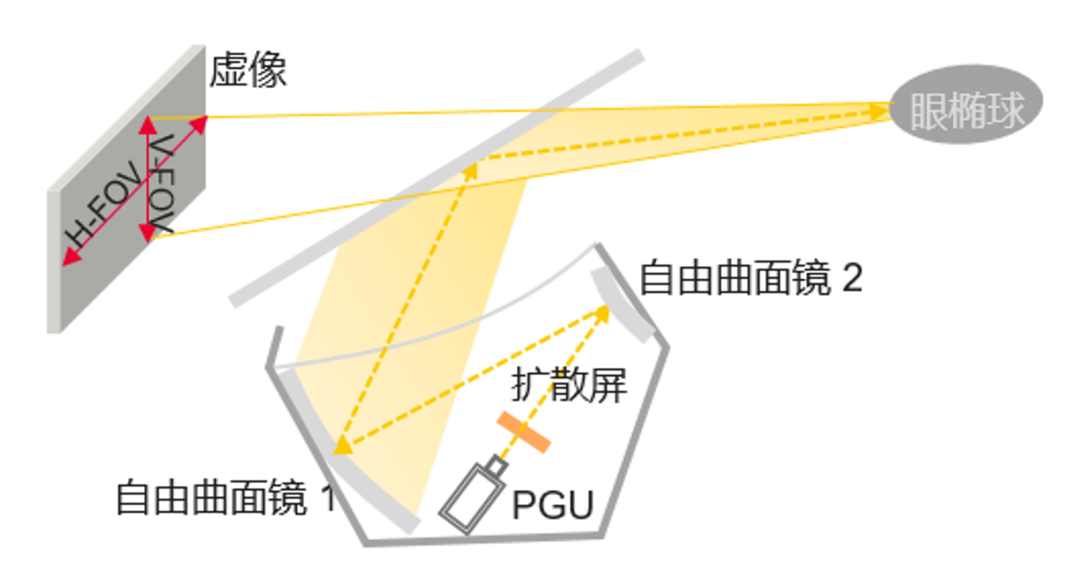
The most common scenario for AR-HUD is AR real-time navigation. Based on this function, the Flyco R7 expands more AR usage scenarios by importing camera data into the HUD system through the integration of cockpit and intelligent driving domain, such as distance warning, lane departure warning, lane change, and obstacle warning. Meanwhile, it reminds drivers of safety by changing colors. It can also help drivers distinguish the distance between their car and the vehicle ahead in inclement weather.
In terms of driving entertainment, AR-HUD will combine location, map, and AI scene to provide drivers with information about scenic spots, shopping malls, restaurants, and other destinations, creating a connected car-to-road environment. It also provides a panoramic audio-visual experience when parking.
After exploring the AR-HUD technology, we find that in the era of intelligent cars, the technology-related configurations are not much different from each other in the configuration list. However, the exact configurations and refinement bring the experience closer to perfection, which is the key evaluation criteria from “cost-effective” to “luxury.” Flyco R7 has clearly grasped this concept.
With the flow of “new stories” and the calm feeling, Flyco R7 manages to interpret luxury with technology. Just as when cars were first invented, the amount of metal use directly related to the price, the more metal you use, the bigger the car, and the more you can fit in. Similarly, in the era of luxury cars, the more configurations and refinements you have, the more superior you feel. Flyco R7 has managed to create a luxury experience through various technological advancements, such as electric doors, frameless car doors, and advanced driving assistance. AR-HUD not only provides users with more comfortable driving experience, but also eliminates distractions while driving. This is the essence of Flyco R7’s luxury image, and the reason why it has gained attention.
This article is a translation by ChatGPT of a Chinese report from 42HOW. If you have any questions about it, please email bd@42how.com.
